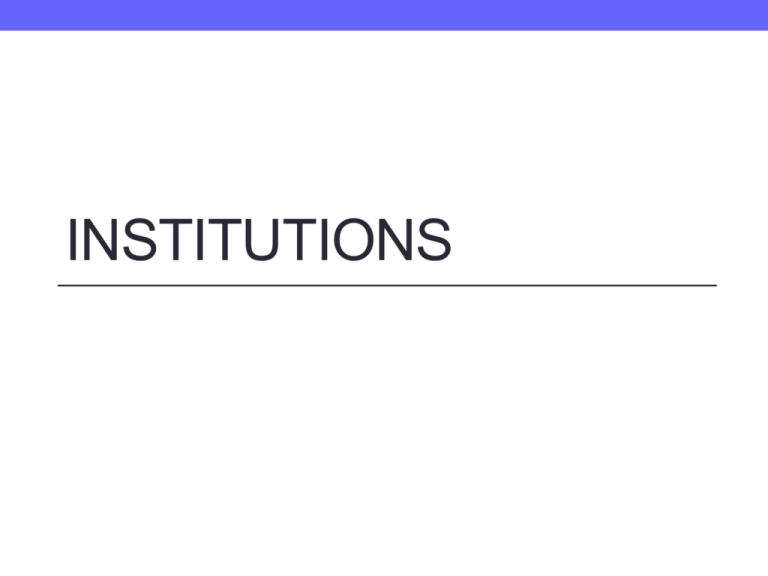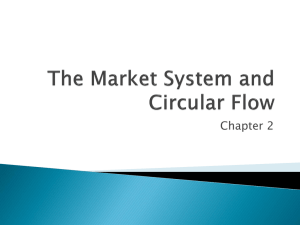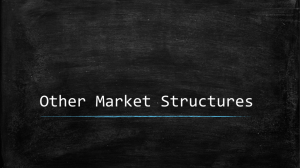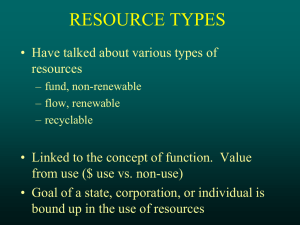
INSTITUTIONS
1962
1963
1964
1965
1966
1967
1968
1969
1970
1971
1972
1973
1974
1975
1976
1977
1978
1979
1980
1981
1982
1983
1984
1985
1986
1987
1988
1989
1990
1991
1992
1993
1994
1995
1996
1997
1998
1999
2000
2001
2002
2003
2004
2005
2006
2007
2008
2009
2010
2011
2012
2013
Korea Rapidly Developing Country
Korea GNI (as a percentage of High Income)
70.00%
60.00%
50.00%
40.00%
30.00%
20.00%
10.00%
0.00%
Orientation of Korean Economy
% of GDP, 2012
45.00%
40.00%
35.00%
30.00%
25.00%
20.00%
15.00%
10.00%
5.00%
0.00%
UN National Accounts Database
Technologically Advanced
Patents USPTO
JAPAN
954917
GERMANY
375692
UNITED KINGDOM
152366
FRANCE
140724
KOREA, SOUTH
118443
TAIWAN
116025
CANADA
110164
SWITZERLAND
62929
ITALY
55994
SWEDEN
49087
NETHERLANDS
46949
AUSTRALIA
28519
ISRAEL
27495
Definition of Emerging Markets
• Emerging markets are often distinguished from
developing economies by level of income or growth
potential.
• Emerging markets also distinguished by degree to which
market failures are currently being overcome.
• Market failure: Barriers which prevent people and
companies from meeting to exchange goods and
services.
Korean economy dominated by Chaebol’s
• Why does an electronics
company sell insurance?
•Why does a car
company sell parts to
itself and build ships on
the side?
•Why does a chemical
maker sell household
appliances?
•Why does a telecom
company produce
electronics and drill for
oil?
Neoclassical Economics
Gains from trade is the source of wealth and
foundation of innovation.
• Neoclassical Theory: Competitive markets
implement exchanges that create the maximum total
value for society (buyers +sellers combined).
•
S
D
New Institutional Economics
• Exchange and markets are the source of wealth and
efficiency
But…
• Neo-classicals assume
•
•
•
•
•
•
•
Costless trade
Full information sharing between buyers and sellers
Buyers and sellers always willing to live up to their bargain
Full internalization of costs and benefits
Clear ownership of goods and means of production
Costless information processing
Free entry into markets
And…
• Basis for efficient markets does not arise in a vacuum.
Institutional Framework
• “Institutions are the humanly devised
constraints that structure political,
economic and social interaction.” Douglas
North
Good Institutions
Create Incentives for Efficiencies by
Reducing Uncertainty about Property Rights
&
Minimizing Transactions Costs
Institutional Economics: Transactions Costs
• As economy develops, products
become more diverse and
sophisticated.
• Transactions become more
complicated.
• Transactions costs become a bigger
part of the economy.
Good institutions reduce information asymmetry.
• Transactions costs can arise from asymmetric levels
of information. Asymmetric information leads to
adverse selection.
• Adverse selection: proliferation of bad products or
untrustworthy sellers rives out good products and
sellers leading to a worse marketplace and potentially
market closure.
• Repeated transactions can reduce effects asymmetric
information but limit flexibility. Clientization increases
monopoly power.
Lemons Problem
• Market consists of good sellers and bad sellers
• Buyer cannot distinguish between and good and bad so
pays a discount price.
• If price is not sufficient to cover the value of good
products, good sellers drop out of the market worsening
the product mix (adverse selection)
• If the likelihood of buying a bad product becomes
sufficiently high, buyers may give up and the market
disappears
Vietnam Contracts
Link
• Transition economy legalized private firms but court
efficiency was poor. Contract enforcement was nonfunctional for Vietnamese firms through 1990’s.
• Study: Vietnamese entrepreneurs must rely on non-court
mechanisms. Preferred mechanisms include long-term
(business and social) relationships, personal monitoring
and reputational ostracism,
• Lack of arms-length trade limited the ability to scale
businesses.
• Written contracts were most likely for long-distance trade
and single-customer firms.
Strategies for dealing with Information
Asymmetry
Transition Vietnam
Problem
Information
Gathering
Personal Observation
Reputation Sanctions Limited
Use
Limit Scale
Repeated
Transactions
Personal Relationships
Limit Scale
Subject to Market Power
Contracts
Long Distance Trade
Single Client Firrm
Costly
http://www.doingbusiness.org/
• International Finance Corporation uses micro level evidence
to assess the ease of doing business along two dimensions
1. Strength of legal institutions relevant to business regulation
2. indicators relating to the complexity and cost of regulatory
processes
Williamson: Private Orderings over Public
Orderings Link
• All contracts are necessarily incomplete making
verification of fulfilment of terms difficult for outsiders.
Thus all contract enforcement by courts must be costly.
• Transactional contracts will typically be self-enforcing and
set up to be mutually beneficial within the technological
and cost constraints.
• Advanced countries differ from emerging markets in terms
of a) necessary complexity of transactions; b) array of
private institutions that can monitor and implement
contracts.
Filling Institutional Gaps in Developed
Markets
Variety of Intermediaries important in reducing
information asymmetries and transactions costs
Product Markets Consumer federations, credit card
transactions, retail stores,
information agencies, logistics
firms, shipping, insurance, trade
associations.
Labor Markets
Educational institutions, personnel
agencies
Capital Markets
Financial intermediaries, securities
exchanges , ratings agencies,
Global Competitiveness Report
Global Competitiveness Report
5
4.5
4
3.5
3
2.5
Low income
Lower middle
income
Upper middle
income
High income:
OECD
Efficiency of legal framework in settling disputes, 1-7 (best)
High income:
nonOECD
Trade and Institutional Development
Evolution of Transactions
Supporting Long Distance Trade
1.
2.
3.
4.
5.
Interest paying debt
contracts
Bills of Exchange
Accounting Standards
Price lists and manuals
of weight
standardization
Insurance
Evolution of Enforcement
• Development of codes of
merchant law in Italy .
• Acceptance by guilds in
other European cities.
• Implementation by civil
authorities especially in
Amsterdam
Make rules enforcible
Encourage Innovation
Mutually Reinforcing
Douglass North: Institutions and
Development
• History of successful development is a reinforcing
cycle of better institutions leading to richer
markets and better markets supporting
institutional improvement.
• Catalyst was long-distance trade.
• Long distance trade required “complex of
institutions, organizations, and instruments”
including “the development of standardized
weights and measures, units of account, a
medium of exchange, notaries, consuls,
merchant law courts, and enclaves of foreign
merchants protected by foreign princes in return
for revenue. “
The Global Competitiveness Index 2012-2013 data
platform
Link
Property Rights
• Cycle of market development and institutional
improvement requires long-term investment.
• Long-term investment requires security of property both
from private actors and from government.
Insecurity & Business Constraints Link
Insecurity
70
60
50
40
30
20
10
0
Korea, Rep.
India
Thailand
Cambodia
Malaysia
Pakistan
Indonesia
Lao PDR
Mongolia
Percent of firms identifying corruption as a major constraint
Percent of firms identifying crime, theft and disorder as a major constraint
Percent of firms identifying business licensing and permits as a major constraint
Philippines
Vietnam
Tragedy of the Commons, Garret Hardin 1969
• The tragedy of the commons develops in this way.. the inherent logic of the
commons remorselessly generates tragedy.
As a rational being, each herdsman seeks to maximize his gain. Explicitly or
implicitly, more or less consciously, he asks, "What is the utility to me of adding
one more animal to my herd?" This utility has one negative and one positive
component.
1.
The positive component is a function of the increment of one animal. Since
the herdsman receives all the proceeds from the sale of the additional
animal, the positive utility is nearly +1.
2. The negative component is a function of the additional overgrazing created
by one more animal. Since, however, the effects of overgrazing are shared
by all the herdsmen, the negative utility for any particular decision-making
herdsman is only a fraction of -1.
Adding together the component partial utilities, the rational herdsman concludes
that the only sensible course for him to pursue is to add another animal to his
herd. And another; and another... But this is the conclusion reached by each
and every rational herdsman sharing a commons. Therein is the tragedy. Each
man is locked into a system that compels him to increase his herd without limit-in a world that is limited. Ruin is the destination toward which all men rush,
each pursuing his own best interest in a society that believes in the freedom of
the commons. Freedom in a commons brings ruin to all.
Coase Theorem: Property Rights and
Externalities
• Nobel prize winner Ronald Coase argues allocation of
property rights can solve externalities.
• Example: Train shoots out sparks that cause damage to
nearby farmer’s fields. If railroads don’t bear the costs of
actions they will lay too much track relative to their
societal benefit.
• Solution: Farmers own rights to not have their crops
burned. They can license the railroads to go through for a
fee that covers their costs. Railroads only run if the trip
covers all costs.*
• Problem: Only works in situations where transactions
costs are sufficiently low and cost of enforcing property
rights is low.
Spectrum Rights
• Property is not a tangible object, it is a bundle of legal
rights. The legal system allocates those rights; combined
with a market system they create.
• Telecom relies on signal frequencies clear of other rivals
is a classic commons.
• Spectrum for new (post-Coase) industries like moblie
telephony are auctioned to private interests.
• Spectrum for old industries like tv/radio assigned to
entities deemed worthy by gov’t.
• Terrestrial TV in HK has been limited to two companies, one of
which is operated very poorly. Lack of programming, lack of
competition.
• Coase: Allow holders of licenses to sell rights; achieve efficiency
Informality in Developing Economies
• Lack of clear titles.
• Difficulty in formally registering firms
• Investment in and development of property requires
certainty that future benefits will be internalized.
• Rights to the stream of income generated by property are
important for incentives to invest.
Land titling in Cambodia Link
• Land historically collectivized.
• Years of civil war have left land property ownership
unclear.
• About 15% of land in Cambodia is registered.
• Between 20%-40% of rural people are landless typically
through forced eviction of unregistered landowners. 80%
of urban lives in slums.
USAID – “Overall, weak enforcement of tenure rights has
made it possible for influential individuals (often operating
through legal entities) and groups to acquire large
landholdings for speculative or unproductive purposes. The
large number of illegal land-grabs weakens tenure
security.”
Mystery of Capital de Soto
• Poor people can use informally owned assets and firms to
make a living.
• But extra-legal assets can never be
• used as collateral for capital to extend the business.
• reassigned to more efficient uses.
• be secure enough to make investment worthwhile.
Land Titling Project Thailand Link
• “..(1981−85)…Study found .. only 12 percent of the
agricultural area was covered by title deeds; 49 percent was
held under less secure forms of officially recognized landuse-right documents, 18 percent was occupied by people
who lacked officially recognized documentation, and a further
21 percent was illegally occupied forest reserve.”
• Government allocated land. People w/ten years of use
eligible to register ownership.
• In 2011, more than 90% of non-publically owned agricultural
land is held in secure, formal private ownership.
Results AusAID Report
• Farmers who have legal title to their land felt more secure in
•
•
•
•
•
•
holding the land and were more likely to invest money, time
and effort in developing their land.
People obtained more favorable credit from lending institutions
when they possessed recognized legal title to land.
Farmers with titled land switched cropping systems to fruit
crops, which increased yield, net income and land value.
Additionally, the following social impacts were observed:
People with legal title to their land were gaining equitable
access to credit by using their land as collateral
Poverty in rural areas with land title was reduced
Improved efficiency and equality of taxation
The reduction in land disputes strengthened communities
Good institutions insure property rights.
• Manufacturing technology require investment and
continuous production and ultimately efficient product,
labor and capital markets.
• “Undergirding such markets are secure property rights,
which entail a polity and judicial system to permit low
costs contracting, flexible laws permitting a wide latitude
of organizational structures, and the creation of complex
governance structures to limit the problems of agency in
hierarchical organizations.”
Property Rights
• Allow owners to internalize externalities and could end the
tragedy of the commons.
Property rights include
• right to income from property
• right to exclude others
• right to sell property
• Formal property rights enforcement difficult for poor in
developing economies. Formalizing property incentivizes
investment.
Measurement drives policy improvement Link
Property Rights & Principal Agent
Problem
• Modern production methods will require assembling large
quantities of investment & complex organizational forms.
• At advanced level, effective institutions must allow for the
exercise of property rights within complex organizations.
• Berle & Means “The Modern Corporation and Private
Property”: “Ownership” vs. “Control Rights”. Managers of
firm have strong day to day control over allocation of
resources though flow of income
• Principal agent problem: How to align behavior of those
with control rights to interest of those with ownership
rights.
Corporate Governance -“Corporate governance
deals with the ways in which suppliers of finance to
corporations assure themselves of getting a return on
their investment” Link
• Legal: Better rule of law protecting creditors & property
rights protecting equity owners creates deeper financial
markets, lower credit costs and better allocation of
resources.
• Institutions: Varieties of intermediaries: banks vs.
centralized markets; institutional investors; insider
control vs. diversified shareholders.
The Better Creditor Rights are Defined and Enforced, the more Willing Lenders are to Extend
Credit Note: The original rule of law data comes from the International Country Risk Guide.
Claessens S World Bank Res Obs 2006;21:91-122
© The Author 2006. Published by Oxford University Press on behalf of the International Bank for
Reconstruction and Development / THE WORLD BANK. All rights reserved. For permissions,
please e-mail: journals.permissions@oxfordjournals.org.
Corporate
Governance in
the Asia/Pacific
Debt markets relatively
strong, protection of
minority investors
somewhat weaker.
Creditor Rights & Protecting Investors
7.25
6.75
6.25
5.75
5.25
4.75
4.25
“This index measures the
degree to which collateral
and bankruptcy laws protect
the rights of borrowers and
lenders and thus facilitate
lending.”
3.75
3.25
2.75
East Asia & Europe &
Latin
Pacific
Central Asia America &
Caribbean
Strength of legal rights index (0-10)
Middle East OECD high
& North
income
Africa
South Asia Sub-Saharan
Africa
Strength of investor protection index (0-10)
“This index is an average of the Extent of Disclosure index, the Extent of Director Liability index, and
the Ease of Shareholder suit index.”
Expanding
Securities
Markets
Asian Bond market
initiative part of regional
governance structure to
build
Total Asian Local Currency Corporate
Bond Market (in USD Billions)
3500
3000
2500
2000
1500
Link
1000
500
Mar-95
Nov-95
Jul-96
Mar-97
Nov-97
Jul-98
Mar-99
Nov-99
Jul-00
Mar-01
Nov-01
Jul-02
Mar-03
Nov-03
Jul-04
Mar-05
Nov-05
Jul-06
Mar-07
Nov-07
Jul-08
Mar-09
Nov-09
Jul-10
Mar-11
Nov-11
Jul-12
Mar-13
Nov-13
0
ASEAN Corporate Governance Scorecard
Link
Political Institutions
Rule of Law
Link
Reflects perceptions of the extent to which agents have
confidence in and abide by the rules of society, and in
particular the quality of contract enforcement, property
rights, the police, and the courts, as well as the likelihood
of crime and violence.
2012 Rule of Law
World Bank Worldwide Governance Indicators
Rules of the Game: Informal vs. formal
enforcement
• Live Door: Internet Portal, Grew quickly
• Hostile takeovers of Blue Chip corporations.
• Founder, Takafumi Horie, prosecuted for securities fraud.
Alleged political prosecution. Link
2011 Investment Climate Statement - Japan
· A highly insular and consensual business culture
that is resistant to hostile mergers and acquisitions
(M&A) and prefers to do business, especially M&A
transactions, with familiar corporate partners;
Link
• Business Groups – Large, multi-company associations
operating under common control with long-lasting cooperation.
Austen, J.E., 1990,
• Heavily diversified.
Managing in Development Economies
• Usually family owned.
Link
Chaebols & Business Groups
Link
Philippines Business Groups
Rank
1
2
3
4
5
6
7
8
9
10
11
12
13
14
15
16
17
18
19
20
Company Name
Market Capitaliz
Philippine Long Distance Telephone Company (PLDT)
P 562.61
SM Investments Corporation
P 543.85
SM Prime Holdings, Inc.
P 405.05
Ayala Land, Inc.
P 363.54
Bank of the Philippine Islands (BPI) (Ayala)
P 337.30
Ayala Corporation
P 312.30
Aboitiz Equity Ventures, Inc.
P 278.85
BDO Unibank, Inc.
P 283.96
Manila Electric Company (MERALCO)
P 278.39
Alliance Global Group, Inc.
P 277.28
Aboitiz Power Corporation
P 262.70
JG Summit Holdings, Inc.
P 262.44
Universal Robina Corporation (JG Summit)
P 250.87
Globe Telecom, Inc.
P 222.87
LT Group, Inc.
P 211.02
Metropolitan Bank & Trust Company (Metrobank)
P 207.92
International Container Terminal Services, Inc.
P 195.05
Emperador, Inc.
P 172.50
DMCI Holdings, Inc.
P 161.99
Jollibee Foods Corporation
P 158.92
Theories of Business Groups
Costs
Business Groups ..
-- are the result of
government favoritism.
-- exist to exploit minority
investors.
-- exist to reduce
competition.
Benefits
Business groups …
--Offer economies of scope
and diversification in
absence of markets.
--Substitute for contracting
in vertical organizations.
--Align interests of owners
& managers.
Link
Pyramiding
Keswick Family
81%
54%
Link
Markets vs. Hierarchies
• Where should the firm end and market begin?
• Coase, 1937: Organizing production through markets or
through integration within a firm are alternative modes of
governance. Choice depends on which minimizes
transactions costs and depending on transactions
environment, one or the other might be chosen.
Business Groups fill Institutional Voids
• Missing or malfunction institutions in EM are solved by
business groups.
• Product Markets: group reputation substitutes for detailed
product reputation,
• Labor Markets: Group can internally develop
management talent.
• Capital Markets: Way to Diversify Risk and Increase
Access to Capital
Specific Investment and Hold-up problem
• Some transactions may depend on specific investments
•
•
•
•
which only have value within the context of the transaction
Holdup problem: Asymmetric flexibility may give greater
bargaining power to flexible agents leading to reduce
incentive to invest in long-run capacity.
Complete contracts may solve this problem in theory, but
this depends on lack of unforeseen circumstance and good
contract environment
Firm hierarchies can avoid transactions costs, mitigate holdup problems and information asymmetries.
Example: Park& Shop & Cheung Kong
• Williamson, 1985: Industrial organization occurs to
minimize transactions costs. Choices of markets vs.
vertical integration depends a] existence of specific
investments; b] degree of uncertainty; c] contract
enforcement regime.
• Transactions costs are
more sensitive to
specificity. Worse
institutional support for
market transactions or
greater degree of
unforeseen circumstances
increases the range over
which governing
transactions in a firm make
sense.
Korea &
Competitiveness
• Low ranking of Institutions & Financial Mkt.
Development.
Foundation of Quality Institutions
• Ease of enforcing contracts
• Clarity and strength of property rights
• Good governance and regulation.
Measures of Institutional Quality
• Subjective: Global Competitiveness Report
• Objective: Doing Business
• “Compare Bolivia and Vietnam in the 1990s, both places I
experienced firsthand as an economic adviser. Bolivians
enjoyed greater political and civil rights than the
Vietnamese did, as measured by Freedom House, yet
Bolivia's economy grew slowly whereas Vietnam's
attracted foreign investment like a magnet. It is easy to
see why: Bolivia is a landlocked mountainous country with
much of its territory lying higher than 10,000 feet above
sea level, whereas Vietnam has a vast coastline with
deep-water ports conveniently located near Asia's
booming industrial economies. Vietnam, not Bolivia, was
the desirable place to assemble television sets and
consumer appliances for Japanese and South Korean
companies.”
Filling Institutional Gaps in Emerging Markets
• Characterizing Emerging Markets: Lower income levels,
higher growth potential.
• EM are characterized by weak institutions in some areas.
• Strategies in emerging markets should be organized
around identifying and dealing with institutional gaps.
Goods Markets
•Consumer Credit
•Supplier Base and Logistics
•Branding
Labor Markets
•Managerial Talent
•Union Representation
Capital Markets
•Debt and Equity Market Depth
•Venture Capital
•Bankruptcy Resolution
•Financial Distress
Macro Context
•Openness
•Governance
•Corruption
Private and Public Institutions
Credibility Enhancers
Auditors, ISO Certification
Info Analyzers & Advisors
CRA, Press, Analysts, Consultants
Aggregators & Distributors
Banks, Insurance Companies,
Wholesale trading companies
Transaction Facilitators
Credit card issuers, On-line
marketplaces, exchanges, recruiters
Adjudicators: Arbitrators
Regulators
E-Commerce in
China
Link
EM Strategies
• REPLICATE OR ADAPT business model to existence of gaps –
ex. Dell: Direct sales in developed markets; Local distribution
reps in China.
• COMPETE ALONE OR COLLABORATE Joint ventures
• CHANGE MARKET CONTEXT fill in gaps. ex. Li & Fung, Big 4
accounting.
• EXIT the market. Home Depot, China. No D-I-Y.
Voice, Loyalty, Exit, Albert O. Hirschman.
China Fast Food Market
• Developed economy food supply chains will have
advanced logistics network with elaborate tracking
systems to identify source (time and company) of food
products.
• China had large demand for fast food but lack logistics
and safety systems.
KFC & McDonalds
• ADAPT –. McDonalds avoids franchising operating 95%
of stores but mostly rents.
• COMPETE or COLLABORATE – KFC sourced from local
distributors who bought from small farmers. McDonalds
brought own distributors to China.
• CHANGE CONTEXT – KFC built own logistic systems.
KFC trains thousands of store managers in training
program. .
Changing Context
• Plus: Can be a source of profits if successful.
• Challenges: Markets Institutions specialized. May not be
good organizational fit.
• Usually some reason institutions don’t exist. Lack of
political institutions.
Hypermart China
• Institutional Gaps: National and international logistics and
Distribution systems weak. Must source goods locally.
• Adapt:
2013 Link
• Change Context:
Link
• Exit:
2013 Link






